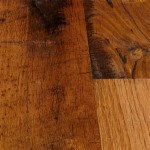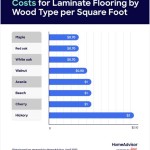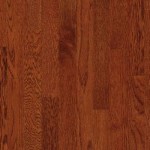How to Accurately Measure Area for Floor Tiles
Determining the surface area of your floor is crucial when it comes to selecting and purchasing floor tiles. Accurate measurements ensure you have sufficient tiles to cover the space without falling short or having excess left over. Here's a comprehensive guide to help you measure the area for your floor tiling project:
Step 1: Gather Necessary Tools
Before you start measuring, gather these essential tools: a measuring tape or laser measuring device, a notepad and pen, and a calculator (optional).
Step 2: Identify the Shape of the Room
Determine the shape of the room you're tiling. It could be rectangular, square, L-shaped, or any other irregular shape. Identifying the shape will help you calculate the area effectively.
Step 3: Measure Length and Width
For rectangular or square rooms, measure the length and width of the space. Start from one corner and measure along the longest side, noting down the measurement. Repeat the process for the other side, perpendicular to the first.
Step 4: Calculate Area for Rectangular/Square Rooms
To calculate the area of a rectangular or square room, multiply the length by the width. Area = Length x Width
Step 5: Measure Sections of L-Shaped Rooms
For L-shaped rooms, divide the space into two rectangular or square sections. Measure the length and width of each section separately and calculate their respective areas. Area of L-Shape = Area of Section 1 + Area of Section 2
Step 6: Calculate Area for Irregular Shapes
If the room has an irregular shape, divide it into smaller rectangular or triangular sections. Calculate the area of each section separately and add them together to get the total area. Use the following formulas for triangles: Area of Triangle = (Base x Height) / 2
Step 7: Subtract Covered Areas
If there are any areas that won't be covered by tiles, such as cupboards, closets, or islands, measure and calculate their areas. Subtract these areas from the total floor area to get the net area to be tiled.
Step 8: Account for Cutting and Waste
When purchasing tiles, it's recommended to add an additional 5-10% for waste and cutting. This ensures you have enough tiles to cover any unexpected cuts or breakages.
By following these steps, you can accurately measure the area for floor tiles, ensuring you have the right amount of materials for your tiling project. Remember to double-check your measurements and account for cutting and waste to avoid any costly mistakes.

How To Measure For Floor Tiles Devon

How To Measure A Room For Tiles Artisan Flooring
How To Calculate Tiles Needed For A Floor

How Do I Measure My Area To Tile Whole Flooring Floor Covering Stone Porcelain Low

How To Measure For Tile

How To Measure A Room For Tiles Artisan Flooring

How To Find The Number Of Tiles Required On Floor Tile Calculator

4 Simple Steps To Calculate The Carpet Area Of Your Flat Or House

How To Measure Floor Wall Tiles Mcdaids Heating Merchants

3 Easy Ways To Measure Tiles Wikihow Life
Related Posts








